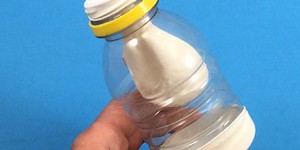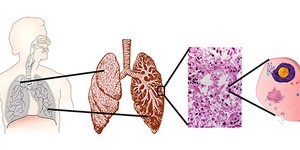Make a Lung Model – STEM activity
Log In
Want to learn more? Check out these other resources:
STEM Activity
68 reviews
We breathe a lot—roughly 12 to 16 times a minute for adults and even more for children! Have you ever wondered how the process of breathing works so smoothly? Our lungs allow us to inhale the oxygen our body needs, but they do much, much more. They also allow us to get rid of carbon dioxide, the waste product created in the body, and they play a vital role in singing, shouting and even giggling. In this activity you will make a model of a lung and use it to discover how air flows in…
Read more
Lesson Plan
Grade: 4th
1 review
Breathing occurs effortlessly, but did you ever wonder how we breathe? In this lesson, students will make a model to discover how air effortlessly flows in and out of our lungs. Next, students will compare lung breathing to other ways of breathing to discover reasons why humans might have developed lungs.
Remote learning: This lesson plan can be conducted remotely. Students can work individually and independently during the Explore section guided by the video and the Student Worksheet. A set…
Read more
NGSS Performance Expectations:
- 4-LS1-1. Construct an argument that plants and animals have internal and external structures that function to support survival, growth, behavior, and reproduction.
Lesson Plan
Grade: 6th-8th
3 reviews
The human body is complex! In this lesson, it is broken down into smaller, manageable parts. Students will build a lung model and discover how different parts of the respiratory system work together to make breathing possible. Next, they will discuss how this system works together with other systems in the body so oxygen can reach every cell of the body. While students perform these explorations, they will realize that multicellular organisms consist of systems, which are a collection of organs…
Read more
NGSS Performance Expectations:
- MS-LS1-3. Use argument supported by evidence for how the body is a system of interacting subsystems composed of groups of cells.
Blog Post
Use these free STEM lessons and activities to help students get hands-on modeling, testing, and exploring the science of the human body and its interconnected systems.
The free STEM lessons and activities below help educators teach students about human body systems, with a focus on the circulatory and cardiovascular systems that helps keep blood pumping through the body, the respiratory system that continuously makes oxygen available to the body and…
Read more
Explore Our Science Videos
Fire Snake Experiment
How Train Wheels Stay On Track - STEM activity
Finding Pi Using Everyday Objects










